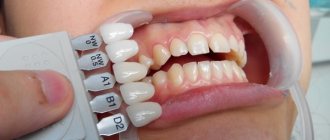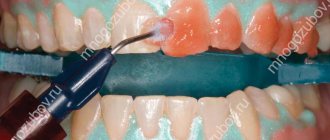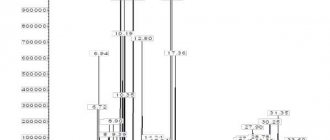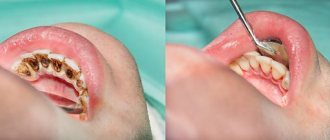Price
The main suppliers of zirconium to the world market are Australia and South Africa.
Recently, the preponderance in the export of zircon and zirconium minerals has increasingly leaned towards the Republic of South Africa. The main consumers are the European Union (Italy, France, Germany), China and Japan. Zircon is traded mainly in the form of ferroalloys. Over the past 10 years, demand for zirconium metal has increased by an average of 5.2% per year. During this time, production capacity managed to rise by a little more than 2%. As a result, there was a constant shortage of zirconium on the world market, which was a prerequisite for increasing its cost.
There are 2 main reasons for the growth in demand for this metal:
- Global expansion of the nuclear industry.
- Active use of zirconium in the production of ceramics.
Also, some experts believe that the increase in zirconium prices was partly influenced by the cessation of baddeleyite mining in Australia.
On the Russian secondary metal market, the cost of zirconium ranges from 450 to 7,500 rubles per kilogram. The purer the metal, the more expensive the price.
How are crowns and other prostheses made from zirconium dioxide made?
Zirconium dioxide is used for the manufacture of both frames and entire structures. In the first case, the zirconium base is covered with a layer of ceramics. In this way, a prosthesis is created that is significantly superior in its aesthetic and functional qualities to traditional metal ceramics. In the second case, dental laboratory specialists manually give the prosthesis the desired shade: they tint the fissures, play with shadow and shine. This technology speeds up the process of prosthetics and makes the structure more reliable. There won't be a thin layer of ceramic on it, so there won't be anything to chip off.
How to properly care for new teeth
There is nothing complicated or unusual in care - artificial all-zirconium “teeth” should be cleaned in the same way as your own. That is, use a brush and toothpaste morning and evening. Please note that the paste should not contain a large number of abrasive particles (RDA index less than 50-75 is the norm). Otherwise, microscopic scratches may appear on the surface, which in the future will lead to a decrease in aesthetics. It is recommended to visit the dentist 1-2 times a year for examination and professional oral hygiene.
Also, you should not put unnecessary stress on your teeth - for example, chewing nut shells, candy, chewing pencils and biting off threads. Although zirconium dioxide is very durable, this does not mean that it cannot be broken with excessive force.
Types of crowns installed on an implant
When restoring a lost tooth, zirconium implants and metal-ceramic structures are used. Other types of materials are not used due to their lack of aesthetics. Thus, plastic orthodontic products quickly lose their beautiful appearance; in addition, they tend to absorb foreign odors and are not durable.
Metal crowns can provoke the patient’s body’s rejection of titanium pins and the development of galvanic reactions in the oral cavity. Ceramics as a material in the manufacture of such structures is used much less frequently and only for certain indications.
Made of metal ceramics
Metal-ceramic crowns, due to their high reliability and aesthetics, are the most popular option for restoring lost units. This element consists of a metal frame, on which a ceramic coating is applied on the outside.
When installing crowns of this type, titanium abutments are used. In some cases, the doctor may suggest that the patient make this element from an alloy of cobalt and chromium, however, installing a cobalt-chromium abutment is not recommended, since the possibility of its breakage cannot be ruled out. If this happens, you will have to remove the entire structure.
Often the classic “implant – removable abutment – crown” scheme becomes impossible for some reason. In this case, the metal frame of the metal-ceramic crown and the abutment are made into a single cast structure. However, performing such work requires considerable experience and high professionalism.
READ ALSO: Which implants are better to choose: Israel or Switzerland?
Metal-ceramic crowns have the following advantages: (we recommend reading: what are the advantages of a metal-ceramic crown, before and after photos on teeth)
- ability to withstand intense loads;
- no negative impact on the oral mucosa;
- excellent aesthetic properties;
- the ability to change or repair an installed product;
- resistance to possible displacement.
Along with these advantages, metal-ceramic crowns also have significant disadvantages. The metal from which the frame of this type of structure is made tends to shine through the ceramic coating at a certain angle of incidence of light. In addition, in some owners of such implants, the gingival tissues become pigmented at the site of contact with the crown. The photo below shows an image of such a defect.
Made from ceramic materials
Installing ceramic crowns will cost the patient much more than metal-ceramic products. When basing your choice on the aesthetic properties of ceramics, you should not lose sight of its big drawback: this material is extremely fragile, and chips and cracks may appear during use. For this reason, ceramic crowns are used mainly for prosthetics of missing units of the frontal group, since it is orthodontic structures of this type that will fully restore the aesthetic appearance of the smile.
From zirconium dioxide
Zirconium crowns for implants are made from zirconium dioxide. These products have many advantages:
INTERESTING: Which material is better for prosthetics - metal-ceramics or zirconium dioxide?
- optimally suited for prosthetics of frontal teeth;
- the material retains its original color and shape throughout its entire service life;
- the use of zirconium implants is completely safe for the patient’s body;
- They have the property of refraction of light, so they are almost impossible to distinguish from natural teeth.
In addition, zirconium crowns, with proper care, can last more than 15 years. When installing these structures, the color of the material is matched to the shade of the patient’s enamel.
Biocompatibility
The metals from which metal-ceramic prostheses are created sometimes cause allergic reactions in the patient, the appearance of inflammation and long-term adaptation to the prosthesis. Crowns based on zirconium oxide are an ideal option for people with hypersensitivity and metal intolerance.
This is due to their following properties:
- Safe composition (does not contain silicon oxide).
- Insensitive to acids, low solubility.
- The smooth surface does not allow plaque to accumulate.
- Inert to other materials present in the oral cavity.
- High thermal insulation ensures no discomfort when eating hot or cold food.
- Minimal preparation of a healthy tooth. The strength of the material allows you to create thin frames, thereby grinding the tooth to a minimum and preserving more healthy tooth tissue.
Application
The above properties provide zirconium with extensive use in various industries. The following areas are highlighted here:
- In electrical engineering, zirconium alloy with niobium is used as a superconductor. Withstands loads up to 100 kA/cm2. The transition point to the superconducting mode is 4.2 K. Also in radio equipment, electronic circuit boards are coated with zirconium to absorb the released gases. Zirconium filters for X-ray tube radiation are characterized by a high monochrome value.
- In nuclear energy, it is used as a material for the shells of fuel rods (the zone where nuclear fission and heat energy production are directly carried out) and other components of a thermonuclear reactor.
- Metallurgy uses zirconium as an alloying element. This metal is a strong deoxidizer, surpassing both manganese and silicon in this indicator. Adding only 0.5% zirconium to structural metals (steel 45, 30KhGSA) increases their strength by 1.5-1.8 times. In this case, the cutting process is further improved. Zircon is the main component of corundum ceramics. Compared to fireclay, its service life is 3-4 times longer. This refractory material is used in the manufacture of crucibles and troughs of steel furnaces.
- In mechanical engineering, metal serves as a material for products such as pumps and pipe shut-off valves that operate under conditions of exposure to aggressive environments.
- In pyrotechnics, zirconium metals are used to make fireworks and fireworks. This happens due to the absence of smoke during combustion, as well as the release of a significant amount of light energy.
- In the chemical industry, zircon serves as a raw material for cermet - a metal-ceramic coating with increased wear resistance and immunity to acids.
- In optics, cubic zirconia is actively used - processed zircon with additions of scandium and other rare earth metals. Cubic zirconias have a significant refractive angle, which allows them to be used as a material for the production of lenses. In jewelry, cubic zirconia is known as a synthetic substitute for diamond.
- In the military industry, zirconium is used as a filler for tracer bullets and flares.
Being in nature
Zirconium occurs naturally only in the form of oxides and silicates. Among them, zircon, eudialyte, and baddeleyite are mainly distinguished. It is worth noting that the metal in deposits is always accompanied by hafnium. This happens due to the similar crystal lattice of metals.
The main share of zirconium minerals is located in the lithosphere. There is an average of 210 grams of zircon per ton of the earth's crust. Zirconium compounds are also found in seawater. But its concentration here is much lower and amounts to 0.05 mg per 1000 liters.
The leaders in the number of zirconium deposits are Australia (zircon), South Africa (baddeleyite), slightly less than the USA, Brazil and India. Russia accounts for 10% of world reserves.
Features of metal-ceramic crowns
The material includes a combination of metal (alloy or one type) and ceramics. Externally, crowns are very similar to natural teeth, which allows them to be used for prosthetics of anterior incisors and chewing molars.
The base is a metal frame (thickness 0.3-0.5 mm). The coating on the outside is made of ceramic (thickness 1-1.5 mm).
The following types of metals are used in the frame manufacturing process:
- cobalt;
- chromium;
- nickel;
- gold;
- platinum, etc.
Products made of metal ceramics have the following advantageous characteristics:
Metal-ceramic crowns - cases of allergies are rare, only in those patients who react to metal-aesthetic indicators, which make it possible to use crowns for prosthetics of the anterior incisors;
a modern palette of shades allows you to choose a tone that matches the natural color of your teeth (the dentition will not have accents); strength of the material (metal-ceramics can withstand chewing loads); cases of allergies are rare, only in those patients who react to metal; if a fragment breaks off due to careless handling of teeth, the defect can be restored; the color of the product does not change throughout the entire period of use of the tooth; resistance to displacement is noted; care does not require high costs and complex procedures; long wearing period (up to 15 years); affordable price.
Metal-ceramics also have disadvantages; they must be taken into account when choosing a material for a crown. A significant disadvantage is the need to grind the tooth during installation of the structure.
A layer of about two millimeters is removed from the bone tissue, which is quite a lot. In addition, in many cases, a depulpation procedure is performed.
Among other things, experts highlight other disadvantages:
- the material does not transmit light, so the outline of a metal frame is sometimes visible on the surface of the crown;
- at the border with the gum, cyanosis of the soft tissues sometimes forms due to the pressure of the prosthesis;
- Over time, the frame may become exposed, which will lead to the development of caries or other dental diseases.
The installation of metal-ceramic crowns is recommended by experts:
- when most of the bone tissue of the tooth is destroyed (more than 50%);
- if one or more teeth are lost;
- with the loss of a fragment of bone tissue due to progressive caries;
- in order to eliminate aesthetic and functional problems in the dentition;
- for installation of prostheses and during implantation (fitting on a pin).
Experts have identified limitations regarding the installation of metal-ceramic crowns:
- diseases of the central nervous system;
- the presence of chronic periodontal pathologies;
- malocclusion;
- presence of infectious diseases or rehabilitation period;
- exacerbation of diseases of the oral mucosa;
- involuntary grinding of teeth;
- pregnancy period.
A clear limitation to the use of metal ceramics is an allergy to metal.
Metal-ceramic crown on a front tooth
Cost of dental restoration
The average price of an all-zirconium crown from Prettau on a turnkey basis is 30-35 thousand rubles - this includes diagnostics, preparation, manufacture and installation of the prosthesis. If you plan to install a stump tab into the root or place an implant, then the cost will increase by at least 15 thousand. When a clinic offers a greatly reduced price, this is a serious reason to think about the originality of the material or the fact that some items on the price list will have to be paid additionally.
1Blatz M., Bergler M., Flexural strength test of PRETTAU® 4 ANTERIOR® after aging, 2021.
QUESTION ANSWER
QUESTION Hello, tell me, is it possible to put crowns made of Prettau solid zirconium on the front teeth? Will they scratch my bottom teeth since I need to replace the crowns on top? Victor
ANSWER Hello, Victor. Prettau brand zirconia does not cause abrasion of opposing teeth, despite the fact that it is a very durable material. So you can safely change the crowns on your upper teeth, the lower ones will not be damaged. However, there are nuances here, for example, if the enamel on the lower teeth is already worn out, weakened, then it will be destroyed - here you need to consult with an orthopedist about treatment methods. You may have to undergo a course of remineralization or still cover these teeth with crowns or veneers.
Author: Yurkevich V. I. (Thank you for your help in writing the article and the information provided)
What are the advantages and disadvantages of zirconium crowns?
Zirconium crowns are used to restore almost completely destroyed, severely damaged teeth. Zirconium dioxide caps are recommended to be placed after root canal treatment, as well as during implantation (for installation on pins).
The main advantages of zirconium crowns:
- wear resistance;
- strength;
- durability;
- the ability to select shade and structure;
- biocompatibility;
- hypoallergenic.
But orthopedic structures made of zirconium dioxide have some disadvantages
The first thing you need to pay attention to is the type of finished products. For example, ceramic crowns are translucent
This allows you to make the shade of the artificial material similar to natural enamel.
Modern clinics use CAD/CAM technologies to produce zirconium crowns
Zirconium oxide is not as transparent as porcelain, so some patients are not very happy with the results. Also, zirconium microprostheses can cause destruction of the natural enamel of surrounding teeth. True, it may take many years for real wear to develop.
Zirconium oxide in dentistry
In modern dentistry, zirconium oxide is the most popular material for making dental crowns. It has become widespread in this area due to its qualities, such as hardness, strength, wear resistance and retention of shape and appearance for a long time, biological compatibility with human tissues, and beautiful appearance. Can serve as a material for single crowns, bridges, pins, fixed prostheses using implants.
Zirconium oxide, the price of which is higher than other types of prostheses, is difficult to process. This explains the fact that such crowns are the most expensive. After creating the frame, a layer of white ceramic is applied to it, since zirconium oxide itself has no color. Thanks to this, ceramics can be applied in a very thin layer.
Prosthetics with zirconium crowns –
Metal-free ceramics include several types of materials, one of which is zirconium dioxide. Ceramic crowns made of this material do not have a metal frame, which makes them look more like real teeth - compared to metal-ceramic crowns. However, the most important advantage of zirconium dioxide crowns is their strength, not aesthetics.
Unfortunately, many patients undergoing prosthetic treatment of their anterior teeth remain dissatisfied with the aesthetics of zirconium dioxide crowns. What is this connected with? The fact is that zirconium crowns, although they do not have a metal frame, still have rather weak light transmission, i.e. transparency, which is very different from the natural transparency of tooth tissue (enamel and dentin).
As a result, zirconium crowns for the front teeth are not the best alternative for those patients who have high transparency of the enamel of the remaining teeth. This means that in such patients, an artificial crown made of zirconium dioxide will not blend in color and transparency with neighboring teeth, and will stand out against their background. However, in patients with low enamel transparency, the aesthetic result can be very good.
Clinical case No. 4 –
Note the unnatural color and lack of translucency of the incisal edge of the zirconium crowns on two central and one lateral incisor. In most all cases, zirconium crowns will look like this
Clinical case No. 5 –
Important: the production of crowns from zirconium dioxide occurs using CAD/CAM technology, which means that crowns are milled from zirconium dioxide blocks on a computer-controlled machine (based on a 3D model of the patient’s teeth). Moreover, in most cases, crowns do not consist of monolithic zirconium dioxide, but like metal-ceramic crowns - first only the zirconium frame is milled, which is later covered with layers of porcelain mass
This technology has a big disadvantage. Advertisements for zirconium crowns usually say that they are very reliable because... Zirconium has the strength of a metal. The strength of the zirconium frame is indeed more than 900 MPa, but the strength of the porcelain layer on its surface is only about 100 MPa. This creates a high risk of porcelain chipping. According to statistics, after 3 years, chips occur in at least 6% of patients with zirconium crowns, and after 5 years – in at least 10% of patients.
Zirconium dioxide with increased aesthetics –
The standard blocks of zirconium dioxide from which crowns are milled are bright white and completely opaque. This is why finished crowns made from this material often look similar - they have an unnatural milky color and lack transparency. It is these zirconium dioxide blocks that are used by most dental clinics due to cost savings.
However, in recent years, translucent zirconia blocks, as well as pre-colored zirconia blocks that have a gradient of color and transparency, have been developed by a number of manufacturers. All this allows you to create an artificial crown that is practically indistinguishable from real teeth, because all natural teeth have such a gradient of color and transparency (from the neck of the tooth to the cutting edge).
Clinical case No. 6 –
Clinical case No. 7 –
For more information about the various options for manufacturing zirconium crowns, read the article: → Options for manufacturing zirconium crowns, prices"
Aesthetics plus durability
White steel is what zirconium oxide ceramics are sometimes called. Crowns made from this material are 5 times stronger than all-ceramic dentures. What is the advantage of such strength? Before the advent of zirconium oxide in dentistry, crowns were made using a metal frame on which a thick layer of ceramic was applied. Metal for durability, ceramics for aesthetics. But it is impossible to create a completely natural look in this way; a dark strip is clearly visible at the place where the prosthesis comes into contact with the gum (this effect is achieved by a metal frame).
Zirconium oxide is not inferior in strength to metal, and allows you to convey the natural color and transparency, like that of a natural tooth, without any unnecessary color inclusions. It is similar in nature to tooth tissue and has light transmittance. Rays of light penetrating into the thickness of the crown are refracted and scattered naturally, creating the effect of a healthy and beautiful smile. When installing a prosthesis, dentists select a color that does not differ from the color of other healthy teeth, so the crown does not show itself in any way, merging with the healthy teeth.
Fixation methods
To attach the prosthetic structure to the implant, special elements called an abutment are used. They are usually supplied complete with implants with which they are supposed to be installed.
But they can also be made individually in the clinic’s laboratory. This is advisable if there is some clinical feature that makes the use of a standard or branded product undesirable.
Abutments have different designs. In most cases, their shape resembles a truncated cone; in other cases, they look like a sphere or other figure.
Abutments can be made integral with the implant. In other cases, they are connected to it using a threaded connection, for which they have a thread in the upper part for attaching the crown. The connection between the crown and the abutment can be permanent (using cement) or detachable (screwed).
The advantages of permanent connections include the technological simplicity of fastening, as well as the absence of the need for precise execution of the abutment, especially if it serves as a support in a bridge. And the cost of an abutment without fastening accessories is less.
The disadvantage of cement fastening is the inability to disassemble the superstructure if repair of any of its elements is required. The advantage is that there is no requirement for increased accuracy, since cement is able to compensate for some manufacturing inaccuracy.
In contrast to a permanent connection, a threaded fastening allows you to easily disassemble the structure and repair or replace a failed element.
The connection to the abutment is made outside the oral cavity. To insert a fixing screw through the crown into the abutment, a hole is made in it, which is sealed after installing the screw.
If for any reason it becomes necessary to detach the crown from the abutment, the seal covering the fastener is drilled out to access the screw.
The ability to disassemble is the most significant advantage of collapsible structures. Their disadvantages include increased complexity, the need for precise execution and a relatively high price.
The trend is that cement fixation is being used less and less. Dentists prefer screw fastening as it is more technologically advanced and advanced.
In the video, the doctor will talk in more detail about the methods of fixing crowns to an implant.
Is zirconium really stronger than steel?
In laboratory tests, zirconium crowns were twice as strong as metal-ceramic prostheses and five times stronger than all-ceramic restorations used in dentistry. Zirconium oxide is 100% biocompatible and since the body does not reject it, it is widely used for various medical purposes. Unlike amalgam and metal alloys used in dentistry in the past, the body perceives zirconium as a natural material, so you don't have to worry about allergies or adverse reactions.
One of the most challenging areas in dentistry today is the restoration of dental structure using biocompatible materials that can withstand the forces of chewing (500-1000 lbs of pressure on the molars). The patient now has a choice of materials that meet the highest aesthetic requirements. This biocompatible metal can be used for one or more crowns (bridge).
Zirconium oxide has the following excellent characteristics:
- Excellent biological compatibility, absolute biological inertia.
- Outstanding physical and mechanical properties: Hardness 1200 HV, Compressive strength 2000 MPa, Flexural strength 1000 MPa, Elastic modulus 210 GPa, Strength 7 Mpavm, Particle size:
- No glass-phase particle connection, extremely high density, porosity: 0%, purity (Zr/Hf/g): 99.9%*
- The translucency makes zirconium an excellent material for cosmetic dentistry
- Optimal material for dentists: requires minimal invasive preparation
Zirconium oxide is the basis of every crown. The accuracy of the zirconium core fit depends on a computer that controls a Swiss machine that cuts out shapes from a single block of zirconium oxide. After receiving the mold, porcelain (99.9% pure) is applied to the tooth and baked.
Due to the extreme precision of the size of the crowns, they can be installed using a biocompatible material. This avoids the need for invasive procedures of etching the tooth with acid and injuring the pulp or nerve of the tooth. This latter procedure often results in the death of the nerve in the root canal.
Contraindications
Zirconium oxide, whose properties are ideal for dentures, has almost no contraindications, with the exception of the following individual characteristics of the human body:
- A deep bite is a pathology of the jaw structure in which the upper jaw covers one third of the lower teeth when closed. The defect leads to excessive pressure on the teeth of the upper jaw and threatens increased wear of tooth enamel.
- Bruxism is an abnormality characterized by teeth grinding, most often during sleep. The cause has not been fully identified, but many scientists agree that bruxism is the result of mental imbalance and stress. Leads to damage to enamel and wear of teeth.
general description
Unusual properties are what primarily determine the industrial value of such a relatively rare metal as zirconium. Its production is beneficial for the national economy due to:
High degree of chemical resistance.
Hydrochloric acid has absolutely no effect on this metal, and it reacts with sulfuric acid only when its concentration is at least 50% and at a temperature above +100 degrees.
Ability to burn in air with virtually no smoke.
Zirconium (finely dispersed) can spontaneously ignite at a temperature of 250 C.
Biological inertia.
Zirconium has absolutely no harmful effects on the human or animal body. Unfortunately, contrary to popular belief, it cannot bring any benefit either.
Not only this metal itself, but also its compounds are in great demand in industry. The mineral zircon, for example, is characterized by very high hardness and a pleasant diamond luster. Therefore, it is sometimes used as a cheap substitute for diamonds. However, recently zircon has been used less and less in jewelry. Nowadays, imitation diamonds are often made from cubic zirconia (artificial zirconium dioxide).
Zirconium oxide as a chemical compound
Zirconium oxide (dioxide) ZrO2 is transparent, colorless crystals of special strength, insoluble in water and most solutions of alkalis and acids, but dissolves in alkali melts, glasses, hydrofluoric and sulfuric acid. The melting point is 2715 °C. Zirconium oxide exists in three forms: stable monoclinic, which is found in nature, metastable tetragonal - part of zirconium ceramics, unstable cubic - used in jewelry as an imitation of diamonds. In industry, zirconium oxide is widely used due to its superhardness; refractories, enamels, glass and ceramics are made from it.
Advantages of zirconium crowns over metal-ceramics
If prosthetics are necessary, the patient is faced with the question of which artificial teeth to choose. Zirconium oxide has many advantages over other materials:
- Prosthetics with zirconium crowns do not require nerve removal.
- Lack of metal in the design, which eliminates problems such as allergic reactions and metallic taste in the mouth.
- Guaranteed absence of disease development under the crown. The denture fits tightly to the gum, food particles and bacteria do not get under it.
- Accuracy of frame execution. Digital data processing guarantees incredible precision in the manufacturing of the structure.
- Individual color selection. The finished prosthesis cannot be visually distinguished from other healthy teeth.
- Possibility of manufacturing a bridge of any length;
- Lightness of design.
- Lack of reaction to cold and hot food. Wearing metal ceramics may cause discomfort due to high or low temperatures. Zirconium oxide does not give such a reaction.
- Absolutely natural appearance.
- Absence of a gray border in the area of contact with the gum.
- When preparing for prosthetics, there is no need to heavily grind the tooth.
- Crowns do not deform and retain their appearance and shape for a long time.
Zirconium in its elemental form is a silvery-white metal with characteristic properties such as corrosion resistance and ductility. In nature it is quite common, but at the same time very scattered. Large deposits of it have not yet been found. People first learned about the possibility of the existence of this metal in 1789. Then the chemist M. Klaproth, while studying the mineral zircon, accidentally discovered its oxide. This metal was obtained in its pure form only in 1925. In the modern world, zirconium, the production of which is widespread, is used in a wide variety of industries. Of course, many domestic enterprises are also producing it.
Reviews
During its relatively short period of use, zirconium oxide has managed to establish itself in dentistry, with only positive reviews. Having studied numerous comments on the network, we can conclude that this material is ideal for making dentures. Over the entire period of use of zirconium oxide in dental prosthetics, not a single case of an allergic reaction has been identified. Rehabilitation is quick and without complications, and the appearance of the smile only pleases the patient, without causing psychological discomfort due to a foreign body in the mouth. People who wore metal crowns with or without coating before installing zirconium prostheses are especially delighted. After all, they have something to compare with. Several decades ago, this type of prosthetics was very popular, since there was no alternative to it at that time. Metal crowns not only caused physical discomfort (allergies, reaction to temperature), but also did not look aesthetically pleasing. After replacing them with zirconium, people are amazed at how an artificial tooth can be invisible to others and look so natural. This became possible thanks to the material of the future – zirconium oxide.









